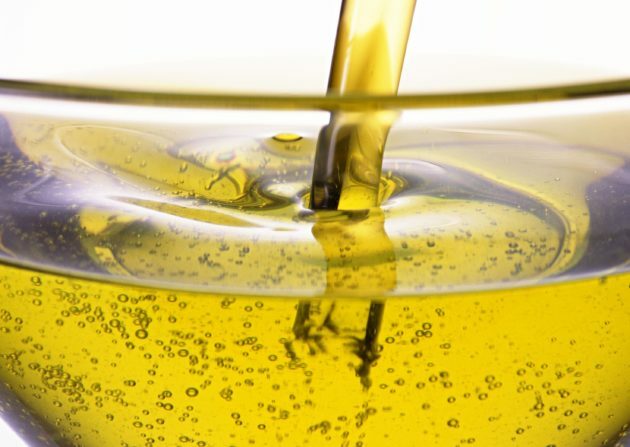Occurrence of constipation after childbirth
Almost all women face such a phenomenon as constipation after childbirth.
And it does not matter whether the woman gave birth alone or by surgery( caesarean section).
The birth of a child is a great joy, but it is often overshadowed by the poor physiological condition of the young mother associated with such an unpleasant problem as constipation and hemorrhoids after childbirth.
Then the woman has a question, what to do with the appearance of constipation after childbirth?
Kinds of constipation after childbirth and their causes
Contents:
- Types of constipation after childbirth and their causes
- Approximate diet and traditional medicine
- Medications for constipation after delivery
Many new mothers think that constipation after childbirth is associated with breastfeedingWith lactation, but more often than not it is not.
Constipation is of two kinds:
- spastic constipation caused by psychological causes - fear, stress, nervous tension. In this case, the peristalsis of the intestine is normal, but the rectum is compressed, which makes it difficult for feces to move along it. Desires for defecation are frequent, but the stool is painful and small;
- atonic constipation that occurs with reduced intestinal peristalsis. Appear both after normal delivery and after cesarean section.
Atonic constipation is characterized by constant blunt pain in the lower abdomen, flatulence, nausea, general depressed state.

With fussing, excrement is first isolated with difficulty, then it can go easier, and at the end the stool is completely liquid.
With this form of constipation, the defecation process is painful, cracks can appear on the walls of the rectum, which leads to bloody discharge when the bowel is emptied.
Spastic constipation is accompanied by periodic bouts of pain concentrated in the left lower abdomen.
Similarly, a woman can feel nausea, weakness, nervousness. Feces are distinguished by several dense fragments at a time.
Due to the fact that such a feces resembles the excrement of a sheep, it is called "sheep".The urge to empty the intestines is constant, but the stool is not very prominent.
As a separate type of constipation, one can distinguish the one in which the large intestine after lengthening. Accordingly, the fecal masses pass the path longer than usual, in the walls of the intestine water is absorbed from them, the feces become harder, a constipation similar to the spastic begins, but it is treated in much the same way as atonic constipation.
Constipation is a condition in which the stool is absent for 2 days or more, there is a pain in the act of defecation, there is a partial liberation of the intestine from stool.
Because women are constantly confronted with a phenomenon such as constipation after childbirth, the causes of this problem have been classified as follows:
- is a large uterus that squeezes the intestine and obstructs its peristalsis. After birth, the uterus weighs about 1 kg and comes to its normal state after about 1 -2 months;
- general weakness of the muscles of the lower abdomen;
- Fear of the woman in childbirth to push because of fear of divergence of sutures at caesarean section;
- tenderness with crotch in the perineum, if there have been stitches;
- gradual return of the intestine to its original place after childbirth, and the consequent uneven peristalsis;
- low motor activity of the woman giving birth;
- malnutrition( when lactating, the newly-made mother is afraid that a particular product will harm the child);
- lack of nutrition due to postpartum depression( the mother giving birth simply does not want to eat anything because of poor health and lack of appetite);
- taking different medications before and after the delivery, anesthetic, analgesics, especially in the case of caesarean section;
- various inflammatory diseases of the gastrointestinal tract also provoke the appearance of constipation after childbirth.
Video:
Approximate diet and traditional medicine
Various reasons for the appearance of constipation after childbirth logically lead to the question - how to deal with constipation in the field of birth, what should be done to minimize them or to remove altogether from the life of the woman who gave birth?
Can candles be used for constipation? Physicians give a variety of recommendations for getting rid of constipation after childbirth.
The answer to the question of how to get rid of constipation after childbirth consists in correcting the diet of the nursing mother.
To select food carefully, given the possible allergy of the baby, but the general recommendations for the diet are as follows:
- you need to eat vegetables and fruits with high fiber content - cabbage, apples, cucumbers, and others. First they need to be heat treated in order to avoid problems with bloating of the baby's belly. After six months you can try to eat salads from raw vegetables;
- with constipation is very useful dried fruits( dried apricots, prunes) in the usual form and compotes of them;
- from constipation after childbirth is very good help crumbly porridge - buckwheat, millet, pearl barley. You can eat muesli if the child does not have allergies on them;
- need to drink plenty of fluids. A glass of cold water in the morning on an empty stomach will improve intestinal peristalsis and relieve constipation;
- to use sour-milk products with a small fat content - kefir, yogurt, sour cream - these products have a beneficial effect on the intestines with constipation. It is best to cook them yourself, then there will be no doubt about the freshness of such food;
- black and bran bread, made from wholemeal flour, will improve digestion and relieve such trouble as constipation after childbirth;
- a bit of linseed oil, drunk in the morning on an empty stomach, will facilitate the movement of stool.

A lactating mother who suffers from constipation after childbirth can not eat the following foods:
- rice and semolina porridge;
- drinks containing caffeine;
- any food from fast food chains( fast food);
- walnuts, peas, beans;
- bread from fine flour, confectionery pastries and chocolate.
Traditional medicine offers to treat constipation after childbirth by the following methods:
- take freshly squeezed potato juice at 1 tbsp.in a day. Divide the reception 3-4 times. You can dilute it in water in proportions of 1: 1;
- 2 tbsp. L.Fruits of figs pour 1 tbsp. Boiling water or hot milk, insist for two hours and take infusion 3 times a day for 1-2 tablespoons;
- brew in 1 cup of boiling water 1 tbsp. L.Mixtures of herbs( chamomile, anise, valerian, nettle), taken in equal proportions. Infuse 2 hours and drink for one day.
- 1 tbsp. L.A mixture of dry herbs( fennel, anise and cumin), taken in equal amounts, brew 1 tbsp. Boil, persist, strain and take three times a day for 1/3 cup.
Video:
Medications to combat constipation after childbirth
An answer to the question of what to do with constipation after childbirth can be gymnastics to reduce the stretched abdominal muscle tissue and return the intestine to its usual place.
However, postpartum gymnastics should be treated with caution, proceed only after consultation with the gynecologist, otherwise the risk of divergence of postoperative sutures, in the case of caesarean section or suturing of the perineum after rupture, is great.
Drug intake during lactation is severely limited, young mothers are afraid of treatment in such a way that the child is not injured.
However, there are preparations, including candles, which are not forbidden by nursing mothers, if they become constipated after delivery:
- syrup based on lactulose "Dufalac", stimulating intestinal peristalsis and not affecting the consistency of breast milk. The drug is a mild laxative;
- "Forlax" or "Fortrans", which is a package with a dry mixture. It should be diluted in 1 liter of water and drunk for 1 day. This is a strong laxative drug, it is often not recommended to use it;
- Fitomycil is a mixture of natural ingredients - a shell of psyllium seeds with the pulp of a domestic plum. Due to the abundance of dietary fiber in this medicine, the contents of the intestine softens, which leads to easier defecation and elimination of the problem of constipation;
- "Mukofalk" - also a preparation on a plant basis, in which the main component is the seeds of plantain. Improves the motor activity of the intestine, is a mild laxative;
- glycerin suppositories that irritate the large intestine and, as a result, improve intestinal motility. Candles are possible for use during lactation, but use them with caution. Candles are contraindicated in case of inflammatory phenomena in the area of the anal opening, such as hemorrhoids;
- an enema "Mikrolaks", the treatment of which is based on splitting feces and stimulating the motor activity of the intestine. Produced in the form of microclysters, convenient for independent use.
The fight against constipation and hemorrhoids after childbirth can be to shower the anal area or take warm baths.

A special infusion of the following recipe is added to the bath.
- 2 pieces of oak bark mixed with herbs( valerian root, horse chestnut seeds and horsetail) taken in 1 piece;
- 1 tbsp. L.Mixture pour 200 g of boiling water and cook in a water bath for 15 minutes, then insist for about 30 minutes;
- fluid cool and drain, then pour into a medical syringe and pour into the anal area.
Use this method several times a day as needed. From this infusion it is possible to do compresses, take baths with it.
Treatment of constipation and getting rid of hemorrhoids can also be done with a bath with a weak solution of potassium permanganate.
This remedy is most often recommended by physicians in inflammatory processes in the intestine in combination with other medications.
Constipation after childbirth is a common problem that causes a lot of discomfort to a woman.
Therefore, when it appears, you need to start proper treatment and always seek help from a specialist.



